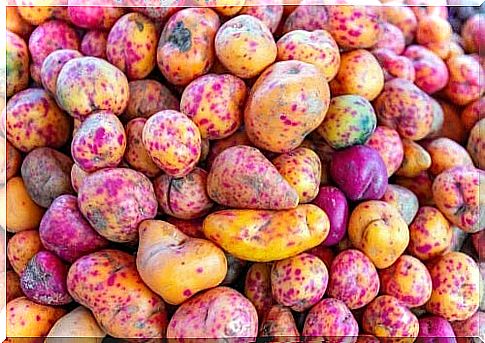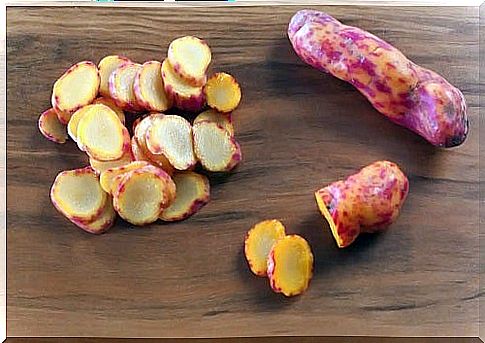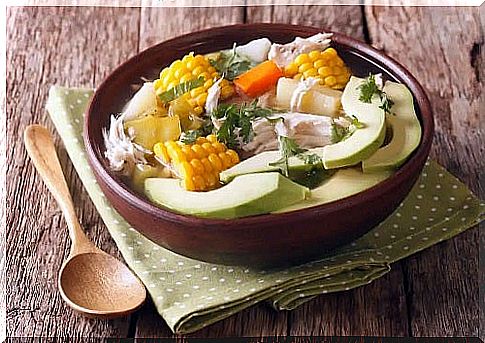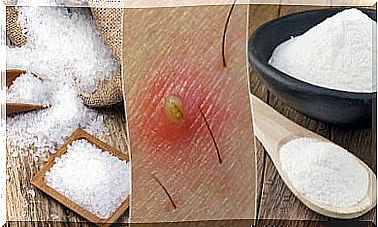What Is Olluco, How Is It Used And What Are Its Benefits?

What is olluco? Olluco ( Ullucus tuberosus ) is a plant in the Basellaceaceaes family , which is grown in some areas of the Andes. It is one of the most widespread and important root crops, located only behind the potato.
Its best known name is olluco, which derives from Quechua. But, depending on the region, the plant receives different names: illaco in Aymara, melloco in Ecuador, ruba or chungua in Colombia and smooth potato in Bolivia and Peru.
It can be difficult to find it outside the areas of origin. But if you are curious to learn more about this food, its properties and how to prepare it, we encourage you to read this article.
What is olluco: main features
The beginning of the cultivation of this plant for food took place about 5000 years ago. Its appearance and dimensions are similar to those of the potato, although olluco has a more elongated shape. The color of the shell is different depending on the variety, from yellow to pink and purple.
It has a mild and sweet aroma, similar to that of beets, although it has a firmer consistency. In fact, it is distinguished by the fact that it has a crunchy texture even after cooking.
This food has been part of the traditional cuisine of South America for hundreds of years. In some cases, its place has been taken by other vegetables in Europe. But it is a staple food and a source of important nutrients.
Outside these countries it is little known. In New Zealand, it has been cultivated for about 20 years and is known as the earth’s gemstone.
Its nutritional composition is very similar to that of the potato. It contains a lot of carbohydrates. In addition, it contains an interesting amount of fiber and protein (compared to other tubers). The percentage of fat is almost non-existent.
In terms of micronutrients, it is worth noting the moderate intake of vitamin C (similar to that of carrots or celery), vitamin A, potassium and antioxidants such as betalaine.

What are its benefits?
Olluco can be easily introduced into the diet. Combined with other foods and in a healthy diet, it offers health benefits:
- Protector of skin, eyes and bones: Vitamin A helps to form and care for bones, tissues, teeth, mucous membranes and skin.
- Antioxidant action: The vivid color of olluc is due to pigments, the most important being betalaine, an antioxidant phytochemical. Antioxidants have the ability to prevent oxidation of other compounds and to avoid oxidative stress. The latter situation has been linked to the occurrence of health problems, including cardiovascular disease, chronic obstructive pulmonary disease, premature aging and neurodegeneration.
- Mucilages are a type of soluble fiber with a simple texture. When consumed, they form a gel that can help lower cholesterol, heal wounds, treat constipation, soften and moisturize digestive mucous membranes, or relieve diabetes.
- Ideal for everyone: Like most tubers, it is a suitable food for the general population. It is easy to digest and full. It is an optimal source of energy for students, athletes and growing children.
Olluco in the kitchen
Olluco can be used in the same way as most tubers. In traditional Andean cuisine, it serves as a basis for preparing soups and stews. But, little by little, it began to be included in salads, where it is accompanied by the leaves of the same plant.
Pickled, can be added to salads and sauces. Olluco can be boiled or grilled and can be eaten with any meat, fish or egg dish. In the form of flour, it is added to the stew to obtain a more consistent texture.
In terms of food, the tuber is the most used part, although the leaves are also used (very similar to spinach). In a cool and dark place and at room temperature, the tuber keeps well for up to a year. If exposed to sunlight, the skin may turn green.
Ajiaco recipe with olluco
This traditional dish of Peruvian cuisine is easy to prepare and very nutritious. The ingredients needed for 4 servings are as follows:
- 1 onion
- 1 red
- Olive oil
- Oregano and coriander
- 1 cup evaporated milk
- 1 glass of water or soup
- 2 tablespoons chopped garlic
- 250 grams of fresh cheese
- 2 tablespoons ground yellow pepper
- 1/2 kilo olluco and 1/2 kilo potatoes
For starters, cook the tubers in a pot of water and salt for 35 minutes. Strain, peel and cut into medium-sized cubes.
Then prepare the vegetables. Put a pan with olive oil on the fire and add the tomato and onion, cleaned and cut. Add the chopped garlic and, when it starts to brown, add the yellow pepper and oregano. Add water or soup, potatoes and olluco and simmer.
Then add the evaporated milk and bring to a boil. After 5 minutes, grind the fresh cheese and add the chopped coriander. After 2 minutes, the preparation is ready. It can be a main course or can be served as a side dish.

What is olluco? Discover new nutritious foods!
Melohoc or smooth potato has a texture and aroma similar to that of potato. Its nutritional composition is very balanced and can be incorporated into the daily diet without any problems.
However, it can be more difficult to find outside the regions where it is an ancient food. If you have the opportunity to try it, we encourage you to prepare one of the many recipes with olluco.









